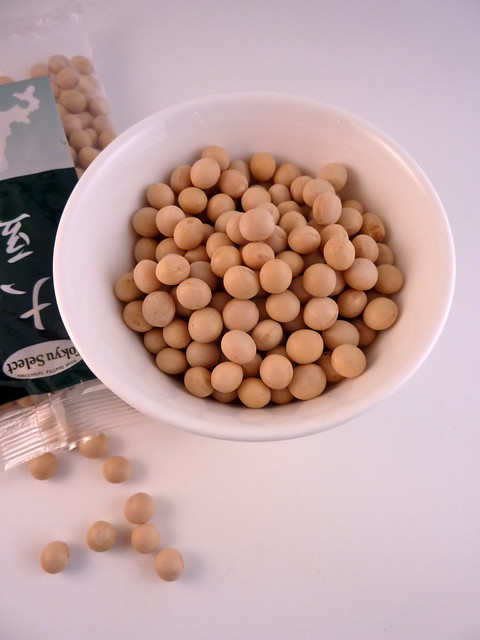September 2013
 |
| Soy beans. CC photo by Kattebelletje on Flickr |
Repeated attempts to persuade the
public that organic foods are no better than conventionally grown
ones, and that GM is both substantially equivalent to and as safe as
non-GM, have resulted in our preferences being viewed as a groundless
matter of 'choice' or 'belief'.
And indeed, using the decades-old
standard compositional analyses to assess the quality of food and
feed, detection of any differences between the three is rarely
possible.
Shoring up this are the regulators
clinging to the concepts that DNA is intrinsically safe to eat, that
protein is digested beyond recognition, and that any agri-chemical
used is only on the market because it is safe.
All this leaves little space for the
exploration of safety concerns.
In 2006, Brazilian scientists published
their investigation into the use of a newer, and much more refined,
anaylitical technique, ESI-MS (see below), to reveal the composition of
certain classes of substances in plant material.
The team carried out a comparison of
organic, conventional and GM soya beans with interesting results.
By using ESI-MS to analyse
three varieties each of organic and conventional soya beans, and six
varieties of GM soya, the authors' sought to examine the possibility
of a characteristic 'fingerprint' of substances, such as
phyto-oestrogens, by which different kinds of soya could be
distinguished.
Their results showed clear,
characteristic differences in materials extracted from each type of
soya. Further tests indicated that these features were not affected
by seasonal influences.
OUR COMMENT
This study was a preliminary proof-of-concept for the use of ESI-MS, and too limited to draw definitive conclusions. It is however notable that organic, conventional and GM soya are not substantially equivalent to each other when sophisticated analytical tools are applied.
Interestingly, organic soya seems to have much less in the way of key phyto-oestrogens than conventional or GM beans. This puts in doubt the touted long history of safe use and health benefits of eating soya: the phyto-oestrogens may only attach to modern soya strains, and seem to be linked to the use of agri-chemicals.
Most striking about the results presented is that the 'fingerprints' of the organic beans consist of a tiny number of substances compared with the conventional or GM soya. What lies at the basis of this apparent simplicity can only be a matter of speculation:
- Are the constituents of organic beans more stable, less readily decomposed into the range of derivatives found in their conventional and GM cousins?
- Are the chemicals used in conventional and GM plants stressing their physiology and stimulating additional metabolic pathways leading to more metabolites?
ESI-MS
'Electrospray ionization mass
spectrometry' (ESI-MS) involves extracting all the polar molecules
(for example, ones which have an acidic part) from a test material.
The resulting mixture is then separated out into its component
chemicals according their relative mass and charge.
The technique can be applied to
simple unprocessed ground single beans. Among other things, it can
be used to assess phyto-estrogens which are highly concentrated in
soya beans, and are a pillar of the 'healthy' image with which soya
products are marketed.
SOURCE
- L. S. Santos et al., 2006, Chemotaxonomic markers of organic, natural, and genetically modified soybeans detected by direct infusion electrospray ionization mass spectrometry, Journal of Radioanalytical and Nuclear Chemistry, 269:2
No comments:
Post a Comment
Thanks for your comment. All comments are moderated before they are published.